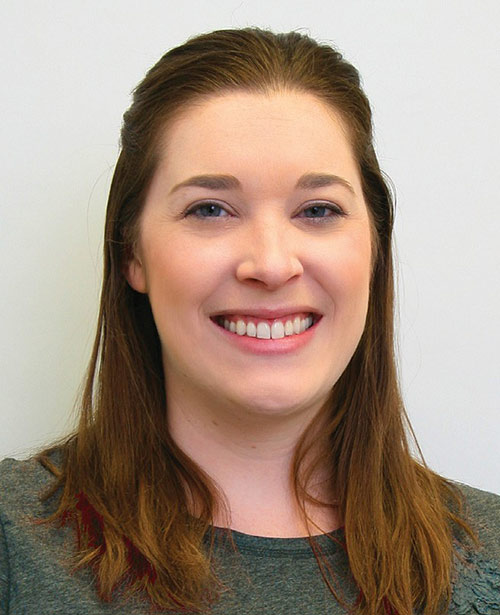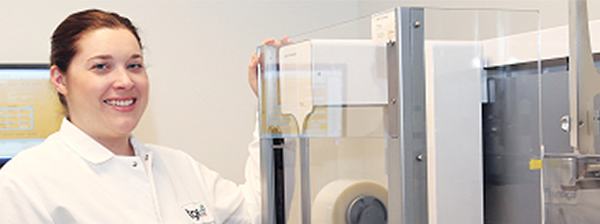Like her colleagues at the Translational Genomics Research Institute, Kristi Stephenson is driven by the need for speed.
The Arizona-based nonprofit, known as TGen for short, is working to develop earlier diagnostics and smarter treatments for cancer, neurological disorders, diabetes, multiple myeloma, and other diseases.
As a research associate, Stephenson’s job is to process samples for sequencing—a vital first step in the quest to understand the underlying causes of complex maladies.
“At TGen, we try to take the work we do in the lab as quickly and efficiently as possible to something that can be translated into material benefits for patients,” Stephenson says.
In fact, quickly moving discoveries “from bench to bedside” is the cornerstone of TGen’s charter, she says.
A Big Leap
Stephenson gets things off to a fast start with the help of the Agilent Bravo Automated Liquid Handling Platform.
Less than a year ago, she was preparing samples by hand, 20 to 30 at a time, and that was manageable, she says. But then TGen landed a large contract that involves samples from 1500 subjects.
“It was a big leap,” Stephenson says. “We wouldn’t have been able to do it without the Bravo.”
The transition was, by necessity, a quick one—and the Bravo platform was soon up and running at full capacity—preparing 96 samples per batch.
“Though we have a lot of flexibility with the Bravo, we didn’t make a lot of changes at the beginning—just a few things to mimic our existing workflow as much as possible,” Stephenson recalls. “It says a lot about the Bravo platform that we could come in pretty green and get it working to our liking pretty quickly.”
 Kristi Stephenson, Research Associate, Translational Genomics Research Institute, Phoenix, Ariz.
Kristi Stephenson, Research Associate, Translational Genomics Research Institute, Phoenix, Ariz.
Especially Impressive
Of course speed isn’t TGen’s only concern—and it isn’t the Bravo platform’s only strength. Especially impressive, Stephenson says, is how the new system has improved reproducibility.
“We’ve seen this especially with the exome preps we’ve done on the machine. We are able to get the most reproducible results we’ve ever seen,” she says. “That had been something that really fluctuated from group to group and batch to batch within groups. However, since we’ve started running samples on the Bravo within our own group, all the standard metrics we look at to get a feel for how the samples are being processed—they’ve just flat lined. And now that we’re starting to bring in other groups, the results we’re getting are very reproducible between similar sample types that are going through the machine.”
Reproducibility is always important, but never more so than when you’re involved in clinical trials as TGen often is.
“Some of the data we recently generated from our Bravo preps was in collaboration with a pharmaceutical group doing Phase 2 and Phase 3 clinical trials,” Stephenson notes. “They’re looking at how patients respond to new drugs they’re hoping to bring to market.”
The Bravo platform’s automated accuracy means that Stephenson depends on it to prepare even small numbers of samples in order to maintain consistently reproducible results.
“It’s also very useful for testing new adaptations, as we eliminate some of the variability seen with manual preps.”
To learn more about the Agilent Bravo Platform and how other researchers use it, visit www.agilent.com/lifesciences/Bravo
For Research Use Only. Not for use in diagnostic procedures. Information, descriptions and specifications in this publication are subject to change without notice.
© Agilent Technologies, Inc. 2014, Published in USA, September 15, 2014, 5991-5206EN



